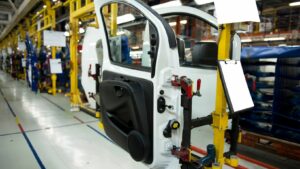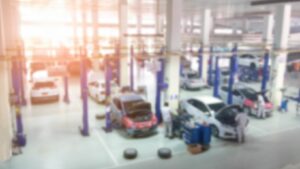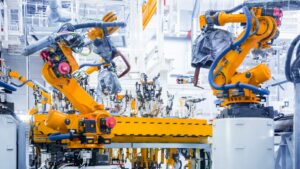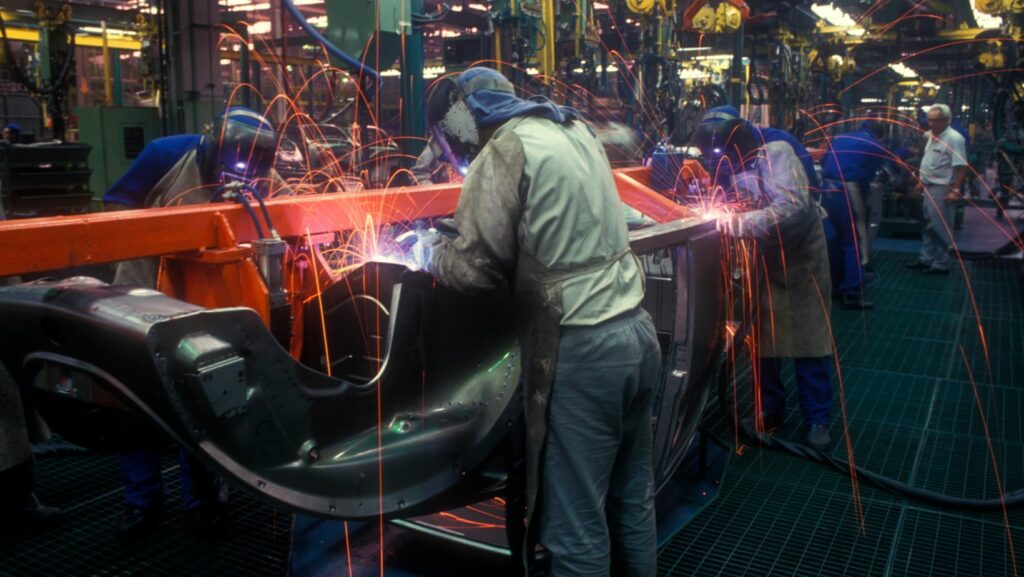In the throbbing heart of modern innovation lies an industry that’s been steering progress for over a century – the automotive industry. It’s a realm where technology and creativity merge, transforming visions of mobility into steel-and-rubber realities.
Automotive Industry
Tracing the path of the automotive industry reveals a rich history of innovation, enduring resilience, and transformative outcomes. This journey had its beginnings with visionaries like Karl Benz and Henry Ford, endured global adversities such as World Wars, and has continually evolved with society’s demands and advancements in technology.
Origins and Early Innovators
 In 1886, the genesis of the automotive industry occurred with Karl Benz’s patent for the “gas-powered vehicle.” It was not an immediate success, as its cost put it out of reach of many. That changed in 1908 with the arrival of the Model T from Ford Motor Company. Henry Ford, the founder, introduced affordable mass-production techniques, specifically assembly lines, that revolutionized the industry. His Model T, affordable to the general populace, kick-started the age of motorized transportation and forever changed the face of travel.
In 1886, the genesis of the automotive industry occurred with Karl Benz’s patent for the “gas-powered vehicle.” It was not an immediate success, as its cost put it out of reach of many. That changed in 1908 with the arrival of the Model T from Ford Motor Company. Henry Ford, the founder, introduced affordable mass-production techniques, specifically assembly lines, that revolutionized the industry. His Model T, affordable to the general populace, kick-started the age of motorized transportation and forever changed the face of travel.
Impact of World Wars
The onset of World War I had a substantial effect on the automotive industry. Manufacturers switched gears from making cars to producing trucks, tanks, and airplane engines needed for war. Post-war, technological advancements made during wartime found their way back into commercial vehicles, improving their efficiency and reliability. World War II also had a significant impact; it halted car production entirely as factories again turned to making war machines. But, after the war, pent-up consumer demand led to an explosive growth in car sales, marking the beginning of the ‘Golden Age’ of the American automotive industry.
Key Segments in the Automotive Industry
The automotive industry, diverse and expansive, breaks down into distinct segments that serve various market needs. Two pivotal sections guide this vast industry: Passenger Cars and Commercial Vehicles.
Passenger Cars
 As the name implies, passenger cars serve the primary function of transporting individuals. They dominate the global automotive industry, accounting for the majority market share. Passenger cars include various subcategories such as sedans, hatchbacks, multi-utility vehicles (MUVs), and sports utility vehicles (SUVs).
As the name implies, passenger cars serve the primary function of transporting individuals. They dominate the global automotive industry, accounting for the majority market share. Passenger cars include various subcategories such as sedans, hatchbacks, multi-utility vehicles (MUVs), and sports utility vehicles (SUVs).
Commercial Vehicles
Turning to the world of work, Commercial Vehicles play a crucial role in transportation and logistics. They encompass a broad range of vehicles designed for business use, including trucks, buses, vans, and tractor-trailers. Trucks, divided into light, medium, and heavy-duty trucks based on their weight, assist in freight transportation. Buses, acting as a means of public transport, contribute to urban mobility and congestion reduction.
Technological Advancements in Vehicles
Progress in technology lays a transformative impact on vehicles, driving them towards a smarter, more efficient, and eco-friendly future. Two such advancements revolutionizing modern vehicles include Electric Vehicles (EVs) and Autonomous Driving Technologies.
Electric Vehicles (EVs)
 Electric Vehicles, often referred to as EVs, are changing the face of the automotive industry, bringing cleaner, emission-free vehicles onto roads. In stark contrast to traditional vehicles that run on combustion engines, EVs operate on electricity. They utilize a traction battery pack to power electric motors, replacing fossil fuels with electricity, a renewable resource, for propulsion. MOTOR Magazine, in their October 2020 report, revealed that global EV sales in 2019 reached 2.1 million units, showcasing rapid consumer acceptance into mainstream transportation.
Electric Vehicles, often referred to as EVs, are changing the face of the automotive industry, bringing cleaner, emission-free vehicles onto roads. In stark contrast to traditional vehicles that run on combustion engines, EVs operate on electricity. They utilize a traction battery pack to power electric motors, replacing fossil fuels with electricity, a renewable resource, for propulsion. MOTOR Magazine, in their October 2020 report, revealed that global EV sales in 2019 reached 2.1 million units, showcasing rapid consumer acceptance into mainstream transportation.
Autonomous Driving Technologies
Autonomous driving technologies form another significant technological leap in the industry. These technologies, equipped with advanced sensors and artificial intelligence, aim at automating the driving process, decreasing human involvement in vehicle operation. On a scale from 0 to 5, defined by the Society of Automotive Engineers (SAE), various levels of vehicle automation exist. For instance, Level 0 represents no automation, and Level 5 signifies full automation. TechCrunch’s 2020 report highlighted that Tesla’s Autopilot, programmed for Levels 1 and 2 autonomy, is the most widespread self-driving technology today.
The industry’s future, it seems, is set to be more dynamic and exciting than ever before, thanks to these leaders and disruptors. As we look ahead, one thing’s clear: the automotive industry is on a fast track to a sustainable, technologically advanced future.



